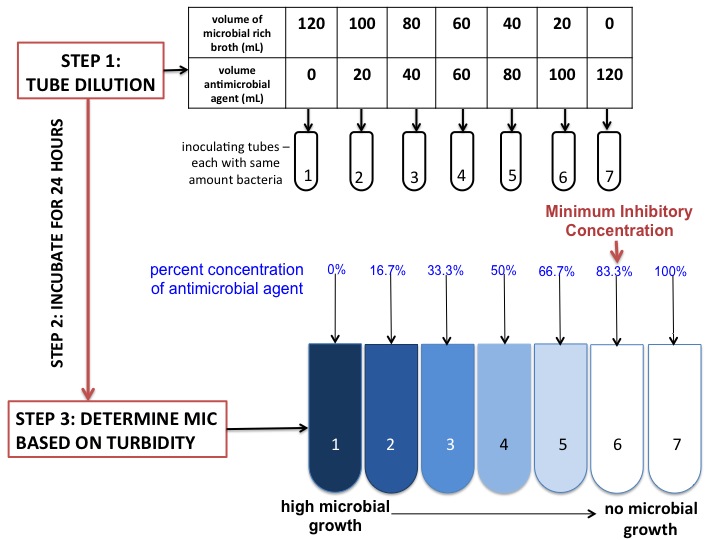|
EARS-Net
EARS-Net otherwise known as European Antimicrobial Resistance Surveillance Network is a central and comprehensive database for the European Union that focuses on eight different bacterial pathogens. Scope EARS-Net tracks resistance rates reported in routine clinical antimicrobial susceptibility data from local and clinical laboratories, gathered by national surveillance programs and laboratory networks. Resistance status is determined according to EUCAST guidelines. Only data from invasive isolates (blood and cerebrospinal fluid) are included in EARS-Net. The antibiotics for which resistance is tracked varies by species, and is based on EUCAST recommendations. Resistance data is collected for these eight pathogens only: * ''Escherichia coli'' * ''Klebsiella pneumoniae'' * ''Pseudomonas aeruginosa'' * ''Acinetobacter'' species * ''Streptococcus pneumoniae'' * ''Staphylococcus aureus'' * ''Enterococcus faecalis'' * ''Enterococcus faecium'' Caveats Several factors can affect the r ... [...More Info...] [...Related Items...] OR: [Wikipedia] [Google] [Baidu] |
Antimicrobial Resistance
Antimicrobial resistance (AMR) occurs when microbes evolve mechanisms that protect them from the effects of antimicrobials. All classes of microbes can evolve resistance. Fungi evolve antifungal resistance. Viruses evolve antiviral resistance. Protozoa evolve antiprotozoal resistance, and bacteria evolve antibiotic resistance. Those bacteria that are considered extensively drug resistant (XDR) or totally drug-resistant (TDR) are sometimes called "superbugs".A.-P. Magiorakos, A. Srinivasan, R. B. Carey, Y. Carmeli, M. E. Falagas, C. G. Giske, S. Harbarth, J. F. Hinndler ''et al''Multidrug-resistant, extensively drug-resistant and pandrug-resistant bacteria... Clinical Microbiology and Infection, Vol 8, Iss. 3 first published 27 July 2011 ia Wiley Online Library Retrieved 28 August 2020 Although antimicrobial resistance is a naturally-occurring process, it is often the result of improper usage of the drugs and management of the infections. Antibiotic resistance is a major subset o ... [...More Info...] [...Related Items...] OR: [Wikipedia] [Google] [Baidu] |
List Of Biological Databases
Biological databases are stores of biological information. The journal ''Nucleic Acids Research'' regularly publishes special issues on biological databases and has a list of such databases. The 2018 issue has a list of about 180 such databases and updates to previously described databasesOmics Discovery Indexcan be used to browse and search several biological databases. Meta databases Meta databases are databases of databases that collect data about data to generate new data. They are capable of merging information from different sources and making it available in a new and more convenient form, or with an emphasis on a particular disease or organism.[metadatabase is a database model for metadata management, global query of independent database, and distributed data processing. The word metadatabase is an addition to the dictionary]. originally ,metadata was only common term referring simply to ''data about data '' such a tags ,keywords, and markup headers. * ConsensusPathDB: a ... [...More Info...] [...Related Items...] OR: [Wikipedia] [Google] [Baidu] |
Bacteria
Bacteria (; singular: bacterium) are ubiquitous, mostly free-living organisms often consisting of one biological cell. They constitute a large domain of prokaryotic microorganisms. Typically a few micrometres in length, bacteria were among the first life forms to appear on Earth, and are present in most of its habitats. Bacteria inhabit soil, water, acidic hot springs, radioactive waste, and the deep biosphere of Earth's crust. Bacteria are vital in many stages of the nutrient cycle by recycling nutrients such as the fixation of nitrogen from the atmosphere. The nutrient cycle includes the decomposition of dead bodies; bacteria are responsible for the putrefaction stage in this process. In the biological communities surrounding hydrothermal vents and cold seeps, extremophile bacteria provide the nutrients needed to sustain life by converting dissolved compounds, such as hydrogen sulphide and methane, to energy. Bacteria also live in symbiotic and parasitic relationsh ... [...More Info...] [...Related Items...] OR: [Wikipedia] [Google] [Baidu] |
Biological Database
Biological databases are libraries of biological sciences, collected from scientific experiments, published literature, high-throughput experiment technology, and computational analysis. They contain information from research areas including genomics, proteomics, metabolomics, microarray gene expression, and phylogenetics. Information contained in biological databases includes gene function, structure, localization (both cellular and chromosomal), clinical effects of mutations as well as similarities of biological sequences and structures. Biological databases can be classified by the kind of data they collect (see below). Broadly, there are molecular databases (for sequences, molecules, etc.), functional databases (for physiology, enzyme activities, phenotypes, ecology etc), taxonomic databases (for species and other taxonomic ranks), images and other media, or specimens (for museum collections etc.) Databases are important tools in assisting scientists to analyze and explain a ... [...More Info...] [...Related Items...] OR: [Wikipedia] [Google] [Baidu] |
European Union
The European Union (EU) is a supranational political and economic union of member states that are located primarily in Europe. The union has a total area of and an estimated total population of about 447million. The EU has often been described as a '' sui generis'' political entity (without precedent or comparison) combining the characteristics of both a federation and a confederation. Containing 5.8per cent of the world population in 2020, the EU generated a nominal gross domestic product (GDP) of around trillion in 2021, constituting approximately 18per cent of global nominal GDP. Additionally, all EU states but Bulgaria have a very high Human Development Index according to the United Nations Development Programme. Its cornerstone, the Customs Union, paved the way to establishing an internal single market based on standardised legal framework and legislation that applies in all member states in those matters, and only those matters, where the states have agreed to act ... [...More Info...] [...Related Items...] OR: [Wikipedia] [Google] [Baidu] |
Pathogenic Bacteria
Pathogenic bacteria are bacteria that can cause disease. This article focuses on the bacteria that are pathogenic to humans. Most species of bacteria are harmless and are often Probiotic, beneficial but others can cause infectious diseases. The number of these pathogenic species in humans is estimated to be fewer than a hundred. By contrast, several thousand species are part of the gut flora present in the digestive tract. The body is continually exposed to many species of bacteria, including beneficial commensals, which grow on the skin and mucous membranes, and saprophytes, which grow mainly in the soil and in decomposition, decaying matter. The blood and tissue fluids contain nutrients sufficient to sustain the growth of many bacteria. The body has defence mechanisms that enable it to resist microbial invasion of its tissues and give it a natural immune system, immunity or innate immunity, innate resistance against many microorganisms. Pathogenic bacteria are specially adapt ... [...More Info...] [...Related Items...] OR: [Wikipedia] [Google] [Baidu] |
EUCAST
European Committee on Antimicrobial Susceptibility Testing (EUCAST) is a scientific committee for defining guidelines to interpret antimicrobial resistance. It was formed in 1997 and is jointly organized by ESCMID, ECDC and other European laboratories. EUCAST guidelines are one of the most popular breakpoint guidelines used in antimicrobial susceptibility testing worldwide. The EUCAST guidelines are freely available to all of their users. Like the Clinical and Laboratory Standards Institute, EUCAST offers guidelines to interpret raw minimum inhibitory concentrations (MICs), the lowest concentration of a chemical, usually a drug, which prevents visible growth of bacterium. The interpretation to antimicrobial resistance Antimicrobial resistance (AMR) occurs when microbes evolve mechanisms that protect them from the effects of antimicrobials. All classes of microbes can evolve resistance. Fungi evolve antifungal resistance. Viruses evolve antiviral resistance. ... (reported ... [...More Info...] [...Related Items...] OR: [Wikipedia] [Google] [Baidu] |
Minimum Inhibitory Concentration
In microbiology, the minimum inhibitory concentration (MIC) is the lowest concentration of a chemical, usually a drug, which prevents visible growth of a bacterium or bacteria. MIC depends on the microorganism, the affected human being (in vivo only), and the antibiotic itself. It is often expressed in micrograms per milliliter (μg/mL) or milligrams per liter (mg/L). The MIC is determined by preparing solutions of the chemical in vitro at increasing concentrations, incubating the solutions with separate batches of cultured bacteria, and measuring the results using agar dilution or broth microdilution. Results have been graded into susceptible (often called sensitive), increased exposure, or resistant to a particular antimicrobial by using a breakpoint. Breakpoints are agreed upon values, published in guidelines of a reference body, such as the U.S. Clinical and Laboratory Standards Institute (CLSI), the British Society for Antimicrobial Chemotherapy (BSAC) or the European Committee ... [...More Info...] [...Related Items...] OR: [Wikipedia] [Google] [Baidu] |
European Committee On Antimicrobial Susceptibility Testing
European Committee on Antimicrobial Susceptibility Testing (EUCAST) is a scientific committee for defining guidelines to interpret antimicrobial resistance. It was formed in 1997 and is jointly organized by ESCMID, ECDC and other European laboratories. EUCAST guidelines are one of the most popular breakpoint guidelines used in antimicrobial susceptibility testing worldwide. The EUCAST guidelines are freely available to all of their users. Like the Clinical and Laboratory Standards Institute, EUCAST offers guidelines to interpret raw minimum inhibitory concentrations (MICs), the lowest concentration of a chemical, usually a drug, which prevents visible growth of bacterium. The interpretation to antimicrobial resistance (reported as "R") or antimicrobial susceptibility (reported as "S") differs for all bug-drug combinations which is why guidelines are needed. References Antimicrobial resistance organizations Biology in Europe {{Microbiology-stub ... [...More Info...] [...Related Items...] OR: [Wikipedia] [Google] [Baidu] |
European Centre For Disease Prevention And Control
The European Centre for Disease Prevention and Control (ECDC) is an agency of the European Union (EU) whose mission is to strengthen Europe's defences against infectious diseases. It covers a wide spectrum of activities, such as: surveillance, epidemic intelligence, response, scientific advice, microbiology, preparedness, public health training, international relations, health communication, and the scientific journal ''Eurosurveillance''. The centre was established in 2004 and is headquartered in Solna, Sweden. History As EU economic integration and open frontiers increased, cooperation on public health issues became more important. While the idea of creating a European centre for disease control had been discussed previously by public health experts, the 2003 SARS outbreak and the rapid spread of SARS across country borders confirmed the urgency of the creation of an EU-wide institution for public health. ECDC was set up in record time for an EU agency: the European Commission ... [...More Info...] [...Related Items...] OR: [Wikipedia] [Google] [Baidu] |
Antimicrobial Resistance Organizations
An antimicrobial is an agent that kills microorganisms or stops their growth. Antimicrobial medicines can be grouped according to the microorganisms they act primarily against. For example, antibiotics are used against bacteria, and antifungals are used against fungi. They can also be classified according to their function. Agents that kill microbes are microbicides, while those that merely inhibit their growth are called bacteriostatic agents. The use of antimicrobial medicines to treat infection is known as antimicrobial chemotherapy, while the use of antimicrobial medicines to prevent infection is known as antimicrobial prophylaxis. The main classes of antimicrobial agents are disinfectants (non-selective agents, such as bleach), which kill a wide range of microbes on non-living surfaces to prevent the spread of illness, antiseptics (which are applied to living tissue and help reduce infection during surgery), and antibiotics (which destroy microorganisms within the body). The t ... [...More Info...] [...Related Items...] OR: [Wikipedia] [Google] [Baidu] |






